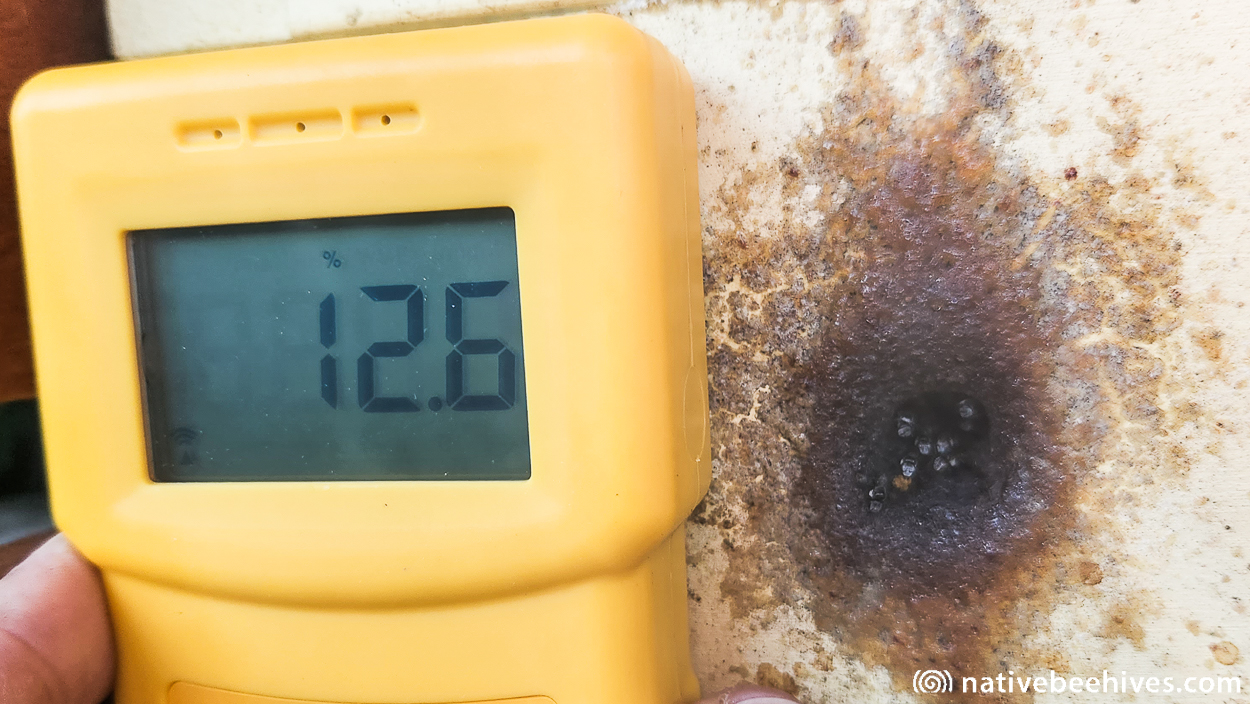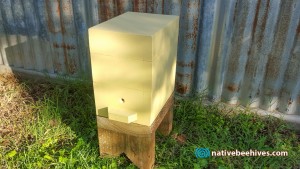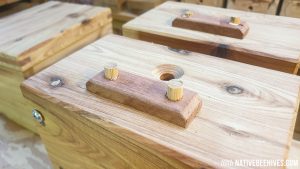The rumour:
“If you paint your wooden hive box it will be like covering the box in a plastic bag and cause condensation”
What is condensation? Water vapor in warm air colliding with a cold surface returning the moisture to liquid.
Wikipedia “It can also be defined as the change in the state of water vapor to liquid water when in contact with a liquid or solid surface”
Even if the wood can absorb some moisture on the inside surface it would take weeks to months for it to travel through the wood, so the outside paint has no effect in that moment. Condensation is something that happens quickly in the moment.
But maybe the paint has caused the moisture content of the wood to increase to saturation point and it can’t absorb any more moisture? – If the wood is saturated and can’t absorb any more moisture you have some serious outside water issues, again not paint related.
The wood in a new empty Hoop Pine box is going to be around 10% Wood Moisture Content (WMC). Adding a colony of stingless bees, Tetragonula carbonaria is only going to increase the WMC to 14% to 16% , painted or not, and that takes time. If it gets to 20% and over you’re going to start having problems with mould or rot and it’s more likely from outside water issues.
I tested a few painted boxes with well established colonies in the yard and they all ranged from 12.6% to 14.1%.
I don’t see any elevated moisture issues in the painted wood hives.
Condensation is more likely to occur when the moisture in the warm air touches a cold surface. You might notice condensation gathering on your plastic viewing windows. Is that the material or temperature of the material causing it?
How did we get to 14% to 16% WMC I hear you ask. Wood increases and reduces moisture content depending on the Relative Humidity (RH) around it. The WMC will be around 20% or 1/5 of the RH that it’s exposed to over time. For example, if there’s a consistent 75% RH the wood will eventually be 15% WMC, but humidity goes up and down quickly and is never consistent. The wood wont change as fast as the humidity, the wood just slowly lags behind averaging everything out over months. A stable environment inside a shed will hopefully see your wood stocks at around 10% WMC.
The RH in a stingless bee colony of Tetragonula carbonaria could be anywhere from 75% to 90% so the WMC of the surrounding wood will end up at 1/5 of those percentages. 14% to 18% WMC.
Photos:
- Uncoated Hoop Pine in the shed: 11%
- Empty Hoop Pine Box with one coat of paint: 12.6%
- Boxes in the yard with well established live colonies: 12.6% – 14.1%






Quote from my Moisture Content & Wood Hives article
Quote from the link – http://www.rlcengineering.com/wmc.htm
Wood Moisture Content Scale’s Meanings: (WMC)
Below 12% – Readings in this range are common to kiln or oven dried woods and furniture grades of wood, and represent dry conditions. Most interior wood is in this range.
12% – 16% – Readings in this range are common to lumber during construction, air dried lumber and “healthy” residential substructures (beneath first floor in crawl spaces). These are typical readings for exterior wood.
16% – 20% – Readings in this range indicate a possible elevated level of wood moisture. Such readings should alert the homeowner to look for a source of excess moisture. The excess moisture source should be corrected if found.
20% – 28% – Readings in this range indicate that conditions are border-line for decay. Surface molds may develop. The excess moisture source should be corrected immediately, and monitored until the WMC returns to the 12-16 range.
28% and above – Readings in this range are often accompanied by decay damage. Substructures with WMC in this range may show decay or rot in floor joist, sills, and subflooring. Repair is often required when WMC readings are in this range.
Wood moisture content between 0% and about 28% is dependent upon the relative humidity (RH) of the air. As the air’s RH increases, so does the moisture content of any wood exposed to the air. Wood exposed to air with a RH of about 90% will reach a Wood Moisture Content of about 20%. Above 90% RH or 20% WMC, mold can grow on the wood.
Decay fungi need liquid water to grow. Once wood is dried below about 28% WMC, water is not available to support decay, unless the wood is exposed to liquid water. This water may come from condensation, roof leaks, plumbing leaks, or contact with the soil. If decay or WMC readings over 28% are present, find and fix the sources of liquid water quickly.
======










